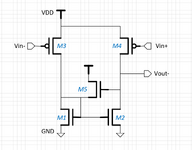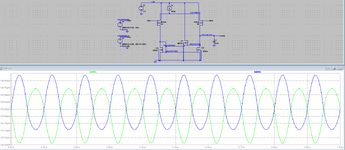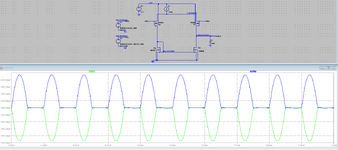kpc
Member level 1
Hi,
Recently I saw a differential pair architecture with a feedback mechanism but could not understand the role of the feedback transistor on the circuit performance. This cell is advised to use in a fully differential autozeroing comparator circuit as the amplification stage. Can someone explain the role of M5 transistor here?
Thanks
Recently I saw a differential pair architecture with a feedback mechanism but could not understand the role of the feedback transistor on the circuit performance. This cell is advised to use in a fully differential autozeroing comparator circuit as the amplification stage. Can someone explain the role of M5 transistor here?
Thanks


